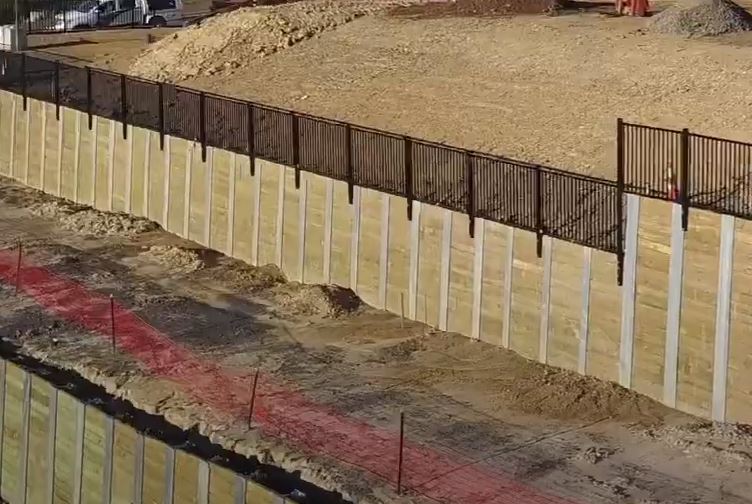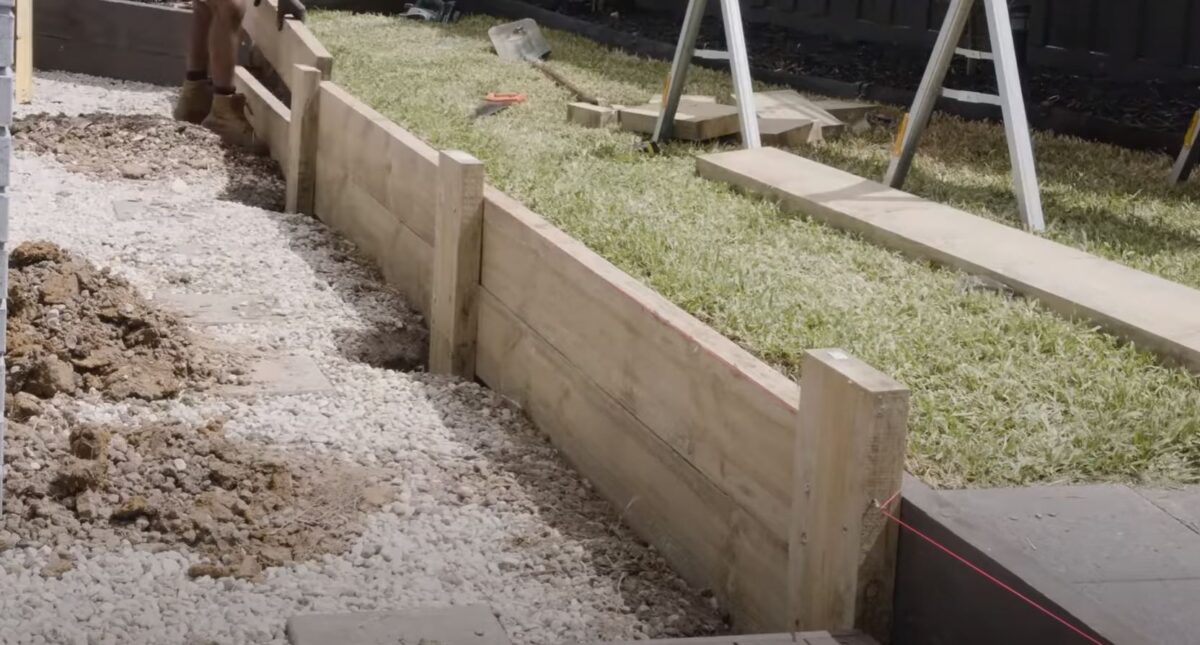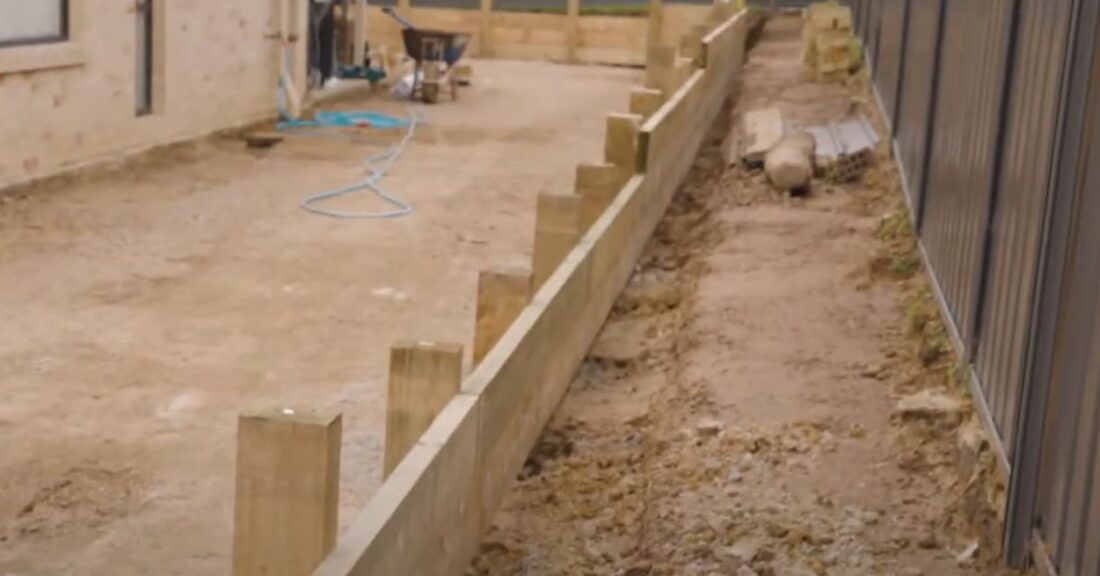Types of Retaining Walls
Exploring retaining wall options in Auckland’s diverse landscapes can be daunting. This guide provides an insightful comparison of different retaining wall types, tailored for the varying needs and conditions across the region.
Gravity Retaining Walls
In the rolling landscapes of Albany, gravity retaining walls are a classic choice. They leverage their own mass to counteract soil pressure from behind, typically constructed from materials like concrete, brick, or masonry. Their design features a broader base and sloped faces, offering stability up to about 3 metres in height. However, beyond this, their size becomes a constraint, leading to potential bearing capacity failures.
Cantilever Retaining Walls
Cantilever walls, ideal for up to 5-metre high constructions, are engineered with an L or inverted T-shaped foundation, using reinforced concrete. This design efficiently transfers the soil’s vertical stress to the base, averting toppling. Particularly space-efficient, they require additional construction space behind the wall. Their application is less suited for existing slopes, unless temporary support is in place during construction.
Embedded Retaining Walls
Embedded walls, often seen in the construction of underground structures like basements or car parks, delve deeper than the excavation level. They use passive earth pressure from the ground below to balance the active pressure above. These walls can be immense, as seen in metropolitan infrastructure projects. Their construction methods vary, including diaphragm walls, bored concrete piles, sheet piles, and king post walls, depending on factors like ground conditions and required depth.
Reinforced Soil Retaining Walls
These walls incorporate geogrid layers to reinforce the soil, enhancing the wall’s bearing capacity and resistance to differential settlement. They’re a modern solution, combining engineering and natural soil stabilization techniques.
Retaining Wall Comparison Guide:
| Feature | Gravity Retaining Walls | Cantilever Retaining Walls | Embedded Retaining Walls | Reinforced Soil Retaining Walls |
| Materials Used | Concrete, masonry, brick | Reinforced concrete | Various, including concrete | Soil with geogrid layers |
| Height Suitability | Up to about 3m | Up to about 5m | Suitable for large depths | Varies based on design |
| Space Requirements | Requires more space at base | Minimal space once built | Varies with method | Minimal, integrates with soil |
| Construction Suitability | Simpler, smaller projects | Requires space behind wall | Complex, large-scale projects | Versatile, suitable for various projects |
| Stability Mechanism | Uses own weight | L-shaped or inverted T base | Deep earth anchoring | Soil reinforcement |
| Design Complexity | Simple | Moderate complexity | High complexity | Moderate complexity |
| Best Used In | Albany’s landscapes | Space-limited areas | Underground structures | Varied terrain like Titirangi |
| Health and Safety Risks | Bearing capacity failures | Requires temporary support | Complex construction risks | Needs careful planning |
Health and Safety Considerations
Retaining wall construction involves several health and safety risks:
- Falls from heights during excavation or wall construction.
- Hazards from nearby services like electricity and gas pipes.
- Risks of falling objects, unstable walls, and excavation cave-ins.
- Health concerns from noise, vibration, dust, manual handling, and water-borne diseases.
- Proximity to water courses, roads, or railways can introduce additional hazards.
To mitigate these risks, careful site investigation is necessary, considering adjacent buildings, roads, and local services. It’s crucial to plan construction sequences, ensure access for plant and machinery, and manage any required access to the rear of the retaining wall. Design considerations should include the type of wall best suited for the location, its interaction with existing services, and potential impacts on adjacent structures. Effective design can minimise excavation depth, eliminate confined space requirements, and incorporate features for easier maintenance.
Exceptions and Suggestions
- In Titirangi’s varied terrain, gravity walls may not always be suitable for higher structures due to space and weight limitations.
- Cantilever walls, while space-efficient, may not always be viable in areas with existing slopes without additional support.
- Embedded walls are more suited for large-scale projects and may not be practical for smaller, residential constructions.
- Reinforced soil walls offer a blend of engineering and natural elements, but require careful planning and execution.
In Summary:
For Auckland residents looking at retaining wall options, understanding the types and their specific applications is vital. Equally important is adhering to health and safety standards to ensure a safe and successful construction. Quality Fencing Auckland can provide retaining wall installation expertise and guidance in selecting the appropriate retaining wall type, ensuring a balance of functionality, aesthetics, and safety.
Retaining Wall Frequently Asked Questions:
What is a Gravity Retaining Wall?
A gravity retaining wall uses its own weight to resist soil pressure, typically made from materials like concrete or brick, and is suitable for up to 3 metres in height.
How Do Cantilever Retaining Walls Work?
Cantilever retaining walls utilize a reinforced concrete structure with an L-shaped or inverted T-shaped foundation, offering stability for walls up to 5 metres high.
What Are Embedded Retaining Walls Used For?
Embedded retaining walls extend below excavation levels for stability, often used in large-scale constructions like underground car parks.
Why Use Reinforced Soil Retaining Walls?
These walls use layers of geogrid to stabilize the soil, enhancing strength and load-bearing capacity, suitable for various applications.
What Are the Main Safety Concerns in Retaining Wall Construction?
Key concerns include falls from height, hazards from nearby utilities, risks of falling objects, and health issues like noise and vibration.
Can Retaining Walls Affect Nearby Structures?
Yes, retaining walls can impact adjacent structures due to ground movement or pressure, requiring careful planning and design.
What Are the Height Limitations of Gravity Walls?
Gravity walls are typically effective up to about 3 metres, beyond which they can become too heavy and space-consuming.
Is Specialized Equipment Needed for Retaining Wall Construction?
Equipment needs vary by wall type, with some requiring heavy machinery for excavation and material handling.
How to Choose the Right Type of Retaining Wall?
Consider factors like height, space, soil type, and proximity to other structures; consulting with experts like Quality Fencing Auckland is advisable.
What Maintenance Do Retaining Walls Require?
Maintenance varies but generally includes regular inspections for cracks, erosion, and drainage issues.
Can Retaining Walls Be Customized for Specific Landscapes?
Yes, retaining walls can be designed to suit specific landscape needs, materials, and aesthetic preferences.
Key Takeaways on Retaining Walls
Diverse Wall Types for Different Needs
Gravity, cantilever, embedded, and reinforced soil retaining walls each offer unique benefits, suited to varying heights, spaces, and construction conditions.
Height and Space Considerations are Crucial
Understanding the height limitations and space requirements of each wall type is vital for effective and safe construction.
Safety is Paramount in Construction
Risks such as falls, hazards from utilities, and environmental factors must be meticulously managed.
Impact on Surrounding Environment
Retaining walls can significantly affect nearby structures and landscapes, necessitating careful planning and design.
Expert Guidance Ensures Optimal Results
Consulting with industry experts like Quality Fencing Auckland can provide tailored solutions and ensure the success of the project.



